I recently ordered a Baikal MP514-K rifle from Pyramyd Air. I think I paid $139 plus shipping (more recently, I've seen it for $79 at Sportsmans Guide, doh!) After a couple days, Fed-Ex arrived with my box from Pyramyd Air. This review is a repost of mine from another forum.
The carton was in good shape and they had overpacked the original box in a larger one filled with packing. Pyramyd Air has always done a good job shipping my purchases, I've never got a crushed box from them.
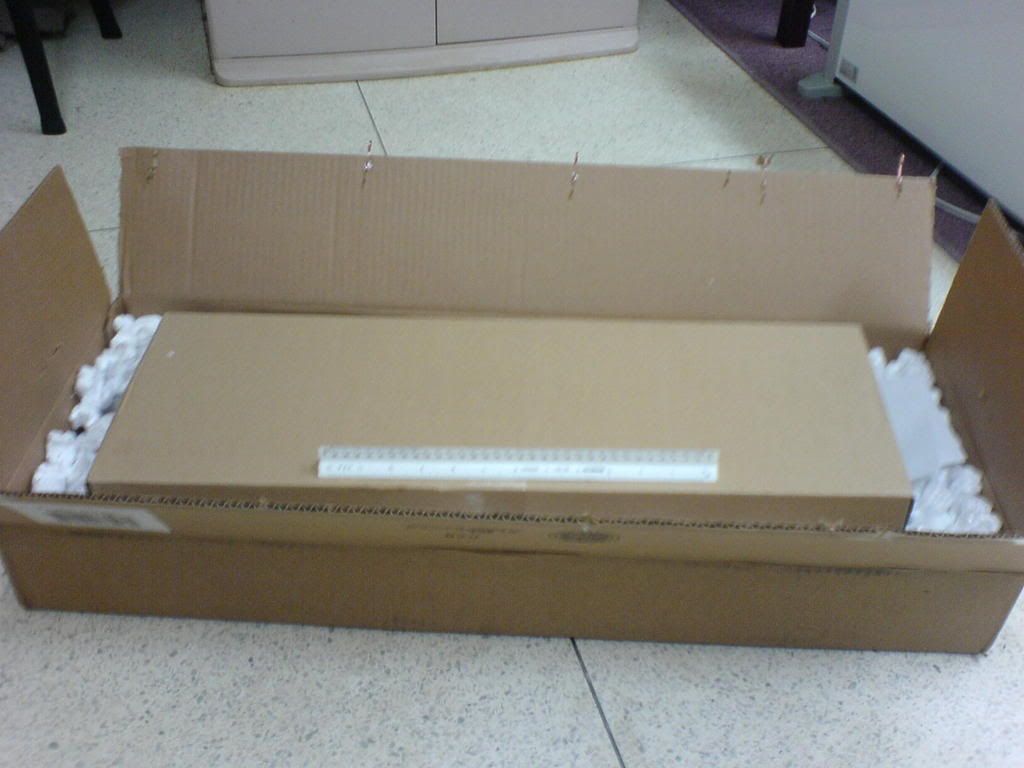
The pics are from my phone (sorry about the shoddy quality). The white bar in the picture is a 12-inch architect's ruler, to give an idea of scale.
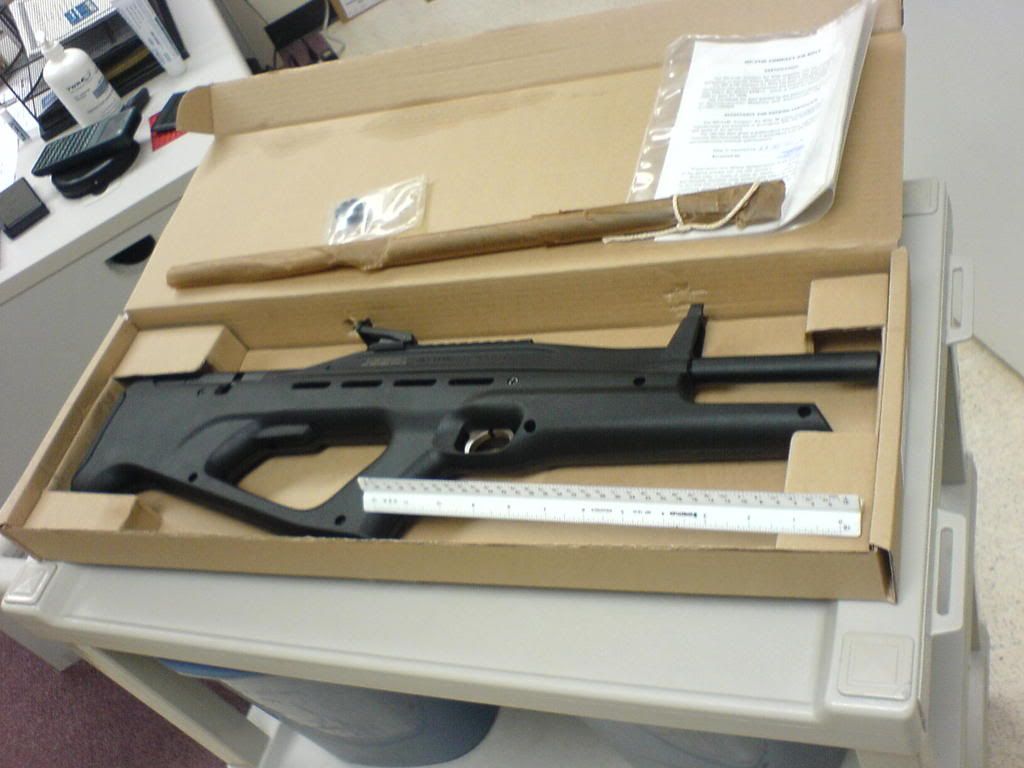
Okay! Not pictured is the very nice piece of oil-absorbant fabric that the gun was wrapped in (I'm going to keep it for when I ship or store a couple of pistols - bonus!). In the plasticene bag is a VERY NICE user's manual, better than I've ever seen from Crosman or Gamo, and a slip with the manufacturing date and preservation information notated on it and SIGNED. Nice touch!
In the small pouch is an extra magazine and an extra piston seal. The long oiled-paper cylinder contains a spare mainspring and a one-piece cleaning rod.

Here is the MP514-K, overlever "bullpup" .177 pellet rifle from IZH-Baikal, next to one of my B3's, to compare scale (and because most of us know how big a B3 is). The two guns weigh about the same by the way, roughly 6.5 lbs (the Baikal is very solid).
The Baikal is 25 inches long, overall, with a trigger pull of 14.25 inches. This is adult scale, and I was impressed, the hold does not feel cramped at all. The foregrip is extended and provides ample room to rest upon my off-hand when shooting (more about that below).
The center of gravity is 10.25 inches forward of the buttplate ( or 4 inches behind the trigger ). Conveniently ( for me ) this is directly under the second cut-out in the lower receiver (look beneath the labelling and the rear sight). In all, the rifle holds well, though I would like a few more ounces forward.
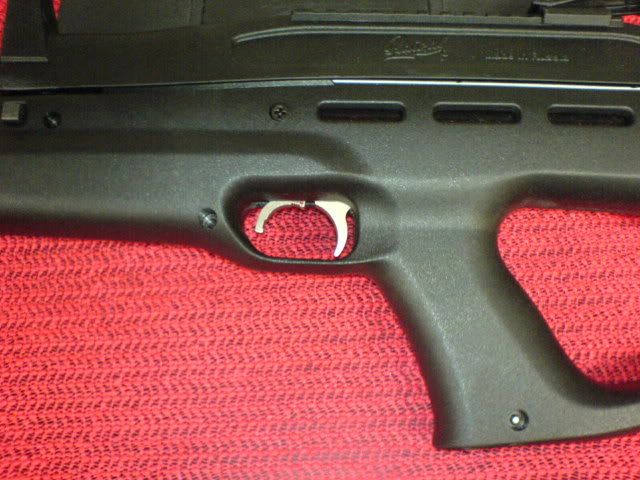
Here is the trigger group. The trigger and safety (forward) are both made of a good alloy and are milled, not stamped. In this photo, you can just barely see the red dot on the safety; here the gun was not yet cocked, and the safety was not set. The safety DOES set itself to SAFE on cocking, and must be pushed forward to release.
Above the trigger group, you can see the Piccatinny rail. This is an integral part of the housing, so non-removable. It measures 5.25 inches, which is enough for any red-dot or tactical sight, and most small-to-medium sized scopes. The rear sight came mounted on the rail, and is partially visible in this photo. It's, frankly, not very good.
At the extreme left of the photo, you can see a square button. This is the barrel catch. It is only on the left side of the foregrip (not-ambidextrous), and must be depressed to unlock the barrel and cock the mainspring.
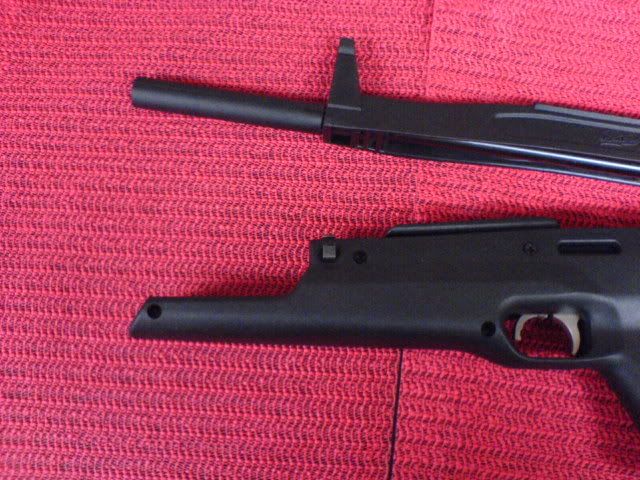
The end of the barrel is protected by a length of ABS shaped like a small moderator or flash hider. It has no holes, and is open at the muzzle end. I'm going to call it a "muzzle brake", even though it isn't. The barrel is 17 inches long and rifled, I noticed my cleaning jags making one complete rotation when passed down the barrel. The barrel crown is located roughly 2.25 inches down in the "brake" so there is some room at the end. The "brake" is 0.78125 inches in outer diameter, and is 0.6875 I.D.
You can see the barrel catch (square button) much better in this photo.
Opening the barrel/upper receiver toward the rear cocks the mainspring. Cocking effort is pretty light, I didn't use a force gauge, but I estimate it at less than 20 lbs.
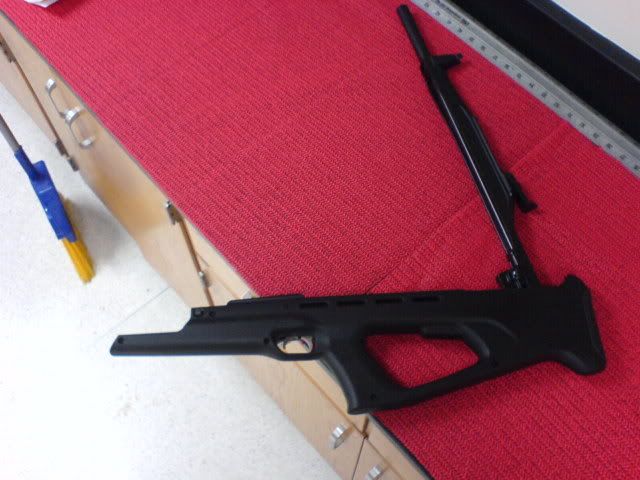
This is about "half-cocked". The anti-beartrap mechanism has very positive clicks, and I counted 14 pawls in all. The magazine indexed itself to the next shot at the point this photo was taken (about 10 clicks).
In this photo you can see the gleam off of the barrel within the upper receiver. The barrel is nicely blued, even though it is hidden when the gun is closed, and very chunky. I will have to get my calipers back out, but I would guess that it is 0.625 inches (5/8 in) in OD. I was nicely surprised by this barrel. The bore was pretty clean and shined up nicely with JB compound, it is very substantially heavy, and I suspect that it is hammer-forged (I will check on that). IZH used hammer-forged barrels on their IZH-60/61's, and if they put one on this plinker, then I am really impressed.
The squared-off area at the base of the barrel is where you find the 8-shot magazine. In the picture above you can't really see the magazine that well. The mag loads from the right side of the stock and only a small bit is visible through a viewing slot in the left side.

Now the rifle is fully cocked, at this point, the safety has clicked backwards into SAFE, and the beartrap mechanism has totally disengaged. The upper receiver can now be swung forward with no resistance and latched.
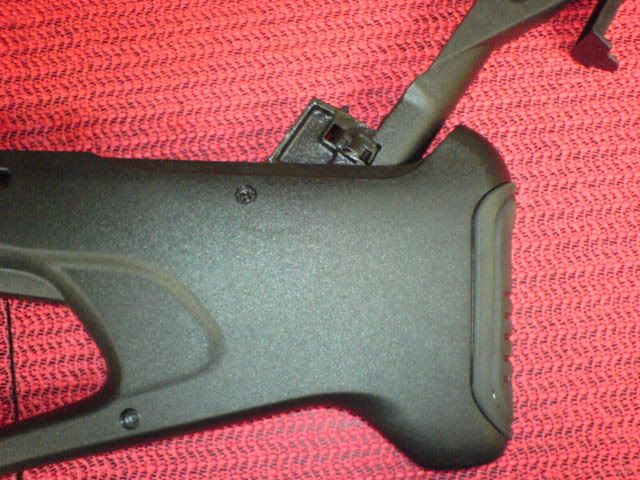
Still at full cock. This shows the magazine better; it is a typical airgun-revolver type mag, and disappointingly plastic. I would have loved to see an alloy maggie. Also visible here is the rear sight, which has a small pinhole aperture. It is adjustable for elevation through a surprisingly large range, and for windage through a rather small range. The windage adjustment is performed by loosening two tiny screws from the aperture plate and sliding the plate left or right. This sight is not to my liking. I can't figure out how to remove it yet. The front sight is a post sitting in half-a-globe and has a nice sharp outline.
I would like to find a weaver-mount rear sight like that employed on the M-16/M-4 family, I think that would suit this well. Alternately, I may also probably equip a tactical sight for plinking.

Kind of blurry, sorry! With my middle finger here, I am depressing the magazine catch, located at the back of the butt and seamlessly integrated into the design (it took me awhile to find it, even though it was clearly pointed out in the manual - which is terrific, by the way). My index finger is pointing toward the magazine. Yes, I'm wearing latex gloves...I had just cleaned the bore, and being at work, I didn't want to spread oil over all my laboratory equipment.
The magazine is held in place by a central spindle-pin that withdraws backwards when the catch is depressed. The magazine is removed by tipping the rifle over toward the right. It works simply, but brilliantly.
I took the rifle out with a box of pellets and starting testing for favorites. Right away, I found that the magazine doesn't like pellets with small skirts:
Crosman Premier Super Match - WAY too loose
Beeman Kodiak Match - a little loose, and too long
RWS Meisterkuegeln - too loose
JSB Exacts - workable, don't fall out of magazine
RWS Superdomes - PERFECT fit.
I used the RWS Superdomes to zero at 10 meters, then started shooting strings with all of the pellets I had to hand, except the Beeman Kodiaks, because the magazine would not fit in the gun with them loaded.
Predictably, the JSB's and RWS Superdomes carried the bell away.
Firing is still a little harsh, but the gun is new, and I have only put about 100 pellets through it. The trigger is long, and feels like single-stage. I haven't even looked to see if it is adjustable (sorry), because there is no point even trying to adjust it this soon. It breaks cleanly. I like this trigger, though I would like to eliminate a little of the travel.
Like a lot of springers, this gun likes to be held loosely. I got the best groups shooting off of my open palm. I found out quickly that holding the butt tight into the shoulder messes the shots up, it's best to just loosely hold the "pistol grip", and kind of balance the weight there and on the front of your shoulder...it's a lot easier and more intuitive than I can make it sound.
This following picture (the last today) is 8-shots of RWS Superdomes shot off-hand. The coin is a 1 Euro piece (the size of an American quarter dollar) and is not covering any holes... How is THAT for a $139 space-gun plinker??? I am very, very pleased.
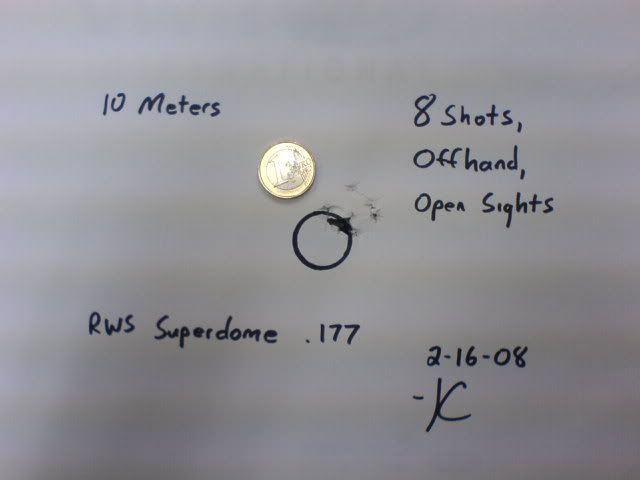
Love it so far, -JC